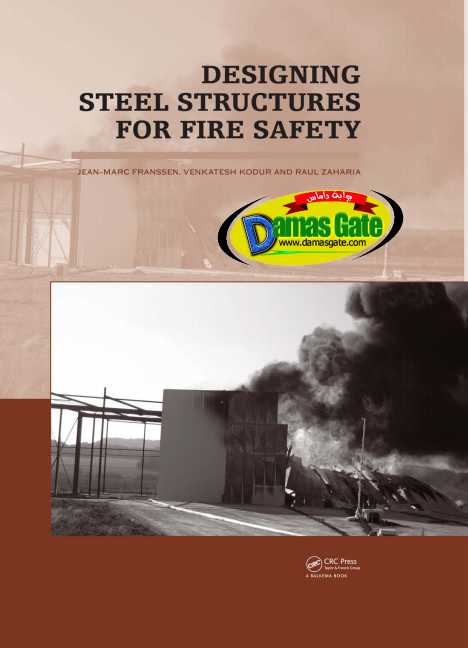Designing Steel Structures for Fire Safety
Fire Resistance
Fire represents one of the most severe conditions encountered during the life-time
of a structure and therefore, the provision of appropriate fire safety measures for
structural members is a major safety requirement in building design. The basis for this
requirement can be attributed to the fact that when other measures for containing the
fire fail, structural integrity is the last line of defence.

Preface
The historical approach for evaluating fire resistance of structural members is
through prescriptive-based methodologies. These methodologies have significant
drawbacks and do not provide rational fire designs. Therefore, in the last two decades
there has been important research endeavours devoted to developing better understanding
of structural behaviour under fire conditions and also to develop rational
design approaches for evaluating fire resistance of structures. This activity was particularly
significant in Western Europe where numerous research reports, Ph.D. theses
and scientific papers were published.
European technical committees were in the fore-front to implement some of the
research findings in to codes and standards to enable the application of rational fire
engineering principles in the design of structures. Among the first internationally recognised
codes of practice are, for steel elements, the recommendations of the ECCS
“European Convention for Constructional Steelwork’’ (ECCS 1983) and, for concrete
elements, the recommendations of the CEB/FIP “Comité Euro-International du béton
/ Fédération Internationale de la précontrainte’’ (CEB 1991). The fire parts of the
Eurocodes were first presented in Luxemburg in 1990. Over the next few years these
Eurocode documents have been significantly updated by incorporating new or updated
provisions based on latest research findings reported from around the world.
On similar lines, in the last few years, many countries have moved towards implementing
rational fire design methodologies in codes and standards. One such example
is the recent introduction of rational fire design approach in the latest edition of American
Institute of Steel Construction’s steel design manual. In addition, a number of
countries around the world are updating their codes and standards by introducing
performance-based fire safety design provisions. A performance-based approach to fire
safety often facilitates innovative, cost-effective and rational designs. However, undertaking
performance-based fire safety design requires the advanced models, calculation
methodologies, design manuals books and trained personnel.
The Eurocode documents, or recently updated codes and standards in other countries,
are nevertheless far from being useful textbooks, lecture notes or guidance
documents. While these codes and standards provide specifications for undertaking
Download
http://s18.alxa.net/s18/srvs2/02/001...Resistance.rar